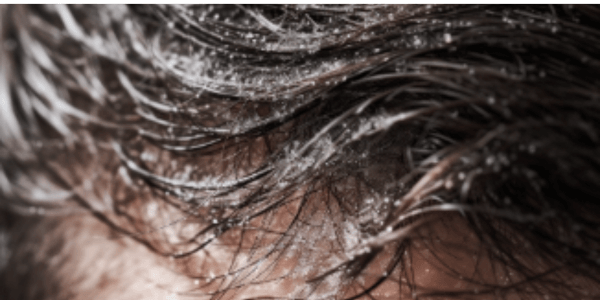Dandruff—a common annoyance that can linger for years, refusing to bow down to conventional treatments like shampoos, creams, or zinc-based remedies. These approaches may seem like quick fixes, but they often bring along unwanted side effects such as hair loss, thinning, graying, and rashes. To truly banish dandruff, we need to delve deeper and understand its root causes.
Unveiling the Causes of Dandruff
Dandruff, at its core, is a result of seborrheic dermatitis, where “dermatitis” signifies skin inflammation, and “seborrheic” pertains to an excess production of sebum—the skin’s natural oil. This connection holds the key to unraveling the dandruff mystery. You see, this particular condition is linked to higher levels of a specific fungus—one that thrives on lipids or fats, precisely the oils found in your sebaceous glands.
Now, consider this: 99% of all the microbes in and on your body are bacteria, leaving 1% to encompass a mix of yeast, fungi, and other microorganisms. Dandruff’s troublemaker falls into the fungal category, rendering it resilient to antibiotics—a stark contrast to the yeast or fungus known as Candida, which often flares up after antibiotic use.
The crux of the issue lies in inflammation caused by this fungal invader. Inflammation leads to flaky skin, a hallmark of dandruff. Remarkably, when you have dandruff, your sebaceous glands go into overdrive, producing extra oil—the very sustenance that keeps this fungus thriving.
Dandruff often surfaces during the teenage years, then retreats, only to stage a comeback around the age of 50. It’s also more prevalent in women with polycystic ovarian syndrome (PCOS) and bears a strong connection to insulin resistance. In fact, there’s a cream—akin to metformin (a diabetes and insulin resistance medication)—that proves effective against dandruff, along with conditions like acne, psoriasis, and rosacea. This revelation led me to explore whether berberine, known for its similar effects without the side effects, could offer similar relief. Indeed, there exists a berberine cream, recognized for its anti-fungal properties and its potential to combat dandruff.
The Common Thread: Insulin Resistance
Here’s the common thread linking these issues: insulin resistance. When your body is insulin resistant, it experiences elevated insulin levels, triggering an increase in androgens—the hormones behind polycystic ovarian syndrome and the excessive sebum production in sebaceous glands, which, in turn, nourishes the dandruff-causing fungus. Interestingly, sebum levels spike during infancy and adolescence, with women potentially having higher androgen levels after menopause due to a drop in estrogen and progesterone that doesn’t match the decrease in androgens. This hormonal shift might explain the resurgence of dandruff.
Bidding Farewell to Dandruff Naturally
Now, for the exciting part—how to bid farewell to dandruff naturally. The solution lies in addressing insulin resistance. Enter the ketogenic diet and intermittent fasting. I’ve observed numerous individuals who battled dandruff successfully by adopting these lifestyle changes without resorting to scalp treatments.
The ketogenic diet and intermittent fasting can help restore insulin sensitivity, combat insulin resistance, and ultimately eliminate the root cause of dandruff. By embarking on this journey towards metabolic health, you not only say goodbye to dandruff but also pave the way for overall well-being.
In conclusion, dandruff may have perplexed you for years, but understanding its origins and taking the right steps towards health can finally bring you relief. Embrace the power of lifestyle changes, and let the ketogenic diet and intermittent fasting guide you on your path to dandruff-free living.
